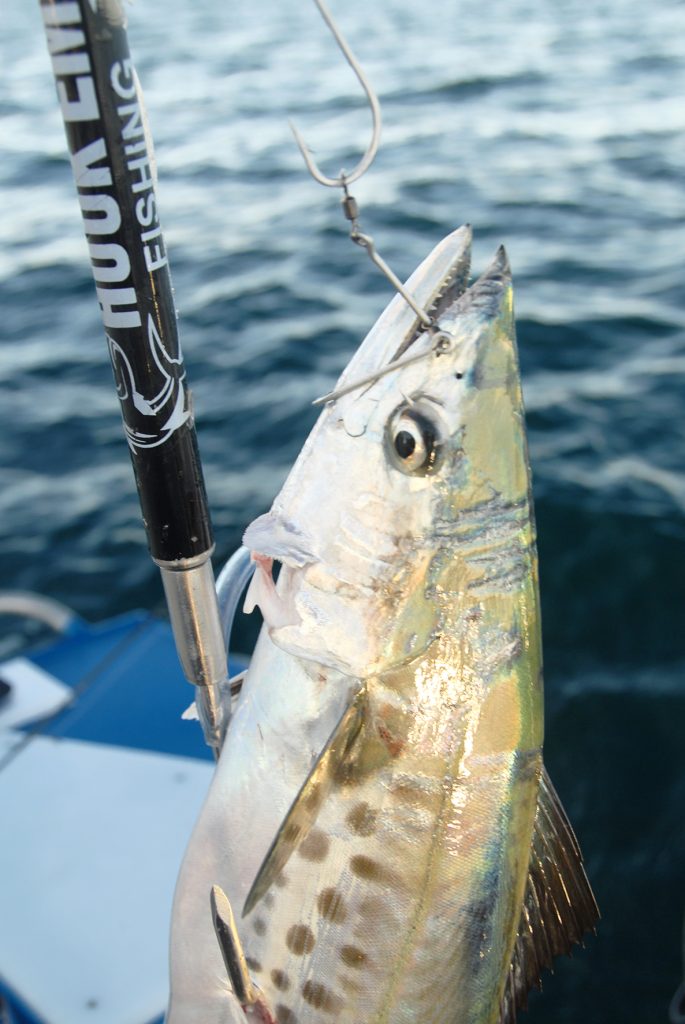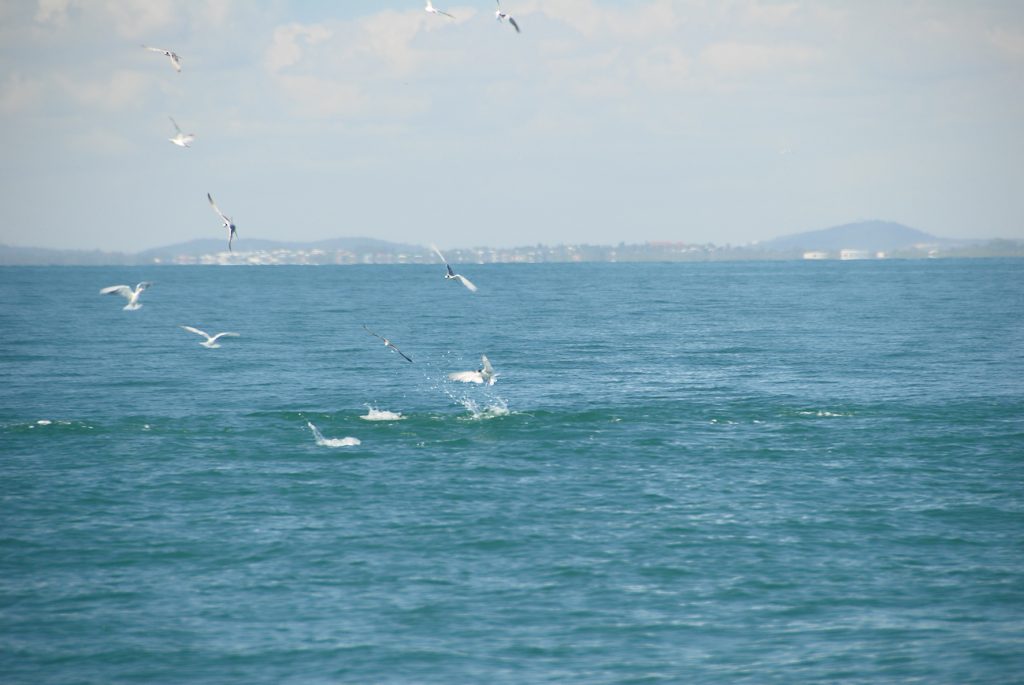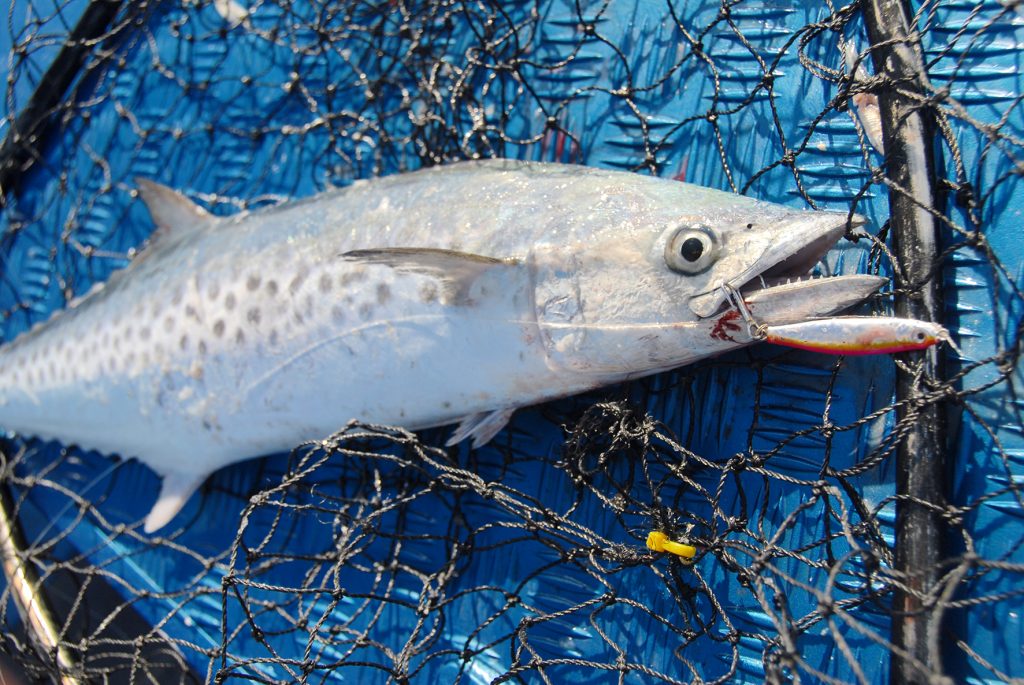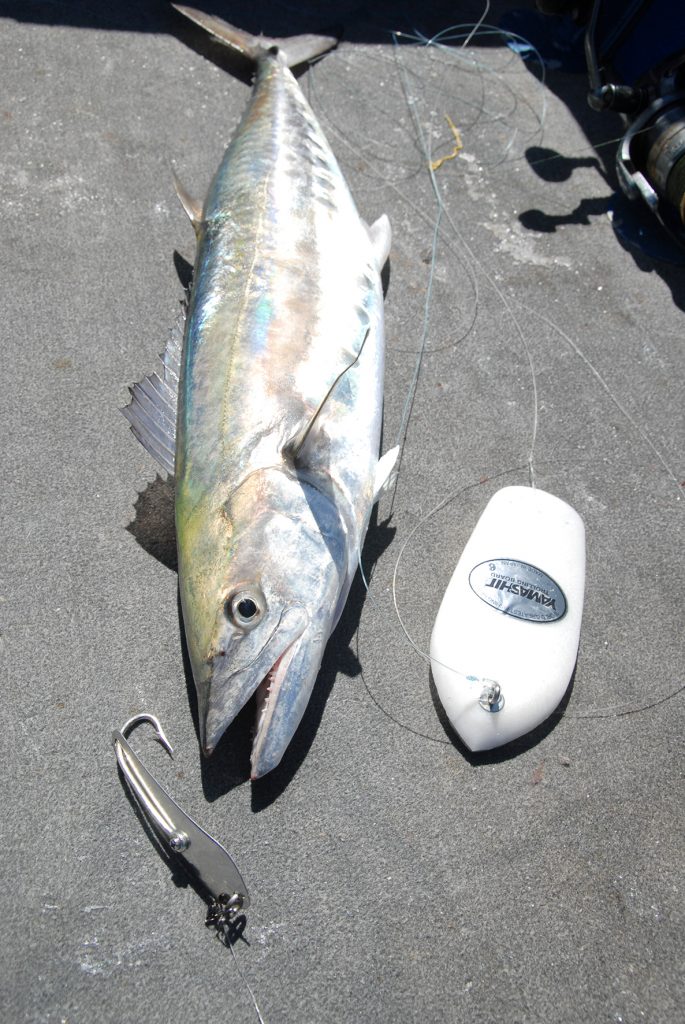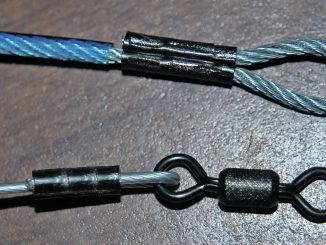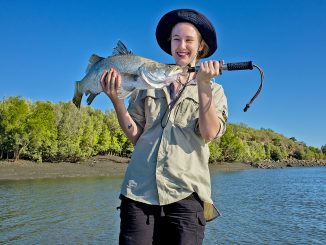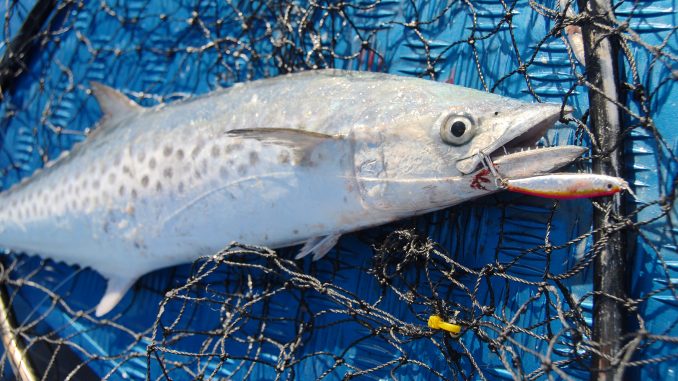
by Gordon Macdonald •
Mackerel are one of the more popular species to target in Moreton Bay. It is amazing the diversity between the different types of mackerel, and as such how you target them. With this warm weather mackerel are extremely active and can be caught off the surface. So, what better time to learn all about catching some mighty mackerel?
M
Mackerel of many different species exist in SEQ, however in Moreton Bay the two main types available are the school and spotted mackerel. Even though the occasional Spanish mackerel is caught, they are not in sufficient numbers to make specific targeting productive.
School mackerel can be caught year round if you know where to look and when, however, September to March commonly offers the greater numbers. During the warmer months schoolies can be caught off the surface, but for much of the year you will need to probe deeper down in the channels and around the Shipping Channel beacons to secure them.
Spotted mackerel are more seasonal and most common from December to April. Due to heightened baitfish activity over these warmer months, spotties are more commonly located in surface feeding schools but will also succumb to a pilchard, small live bait or an array of lures fished around the artificial reefs and bay island margins.
A
Activity on the surface is most common during the warmer months when large schools of whitebait, frogmouths, pilchards and sometimes herring are found throughout Moreton Bay. Large schools can be detected on the surface from a considerable distance as the commotion of slashing fish, wheeling and diving birds and general surface disturbance pinpoints mackerel and other pelagics.
School and spotted mackerel will sometimes be feeding on the same bait school and a trained eyed can distinguish which species is present from observing their feeding activity. School mackerel are the less aggressive and will only create small splashes while spotties are more aggressive and distinguishable by their slashing antics with a rooster tail of water being thrown up with each onslaught into the bait school.
School mackerel are usually fairly wanton in their feeding while spotties seem more organised and numerous fish will corral and hold the baitfish in a large ball (often referred to as a meatball) while others will take slashing raids through the bait with scalpel like jaws gnashing.
C
Casting lures is the most common way to hook schooled fish, with high speed retrieves required to get the attention of these aggressive predators in this situation. The faster you wind the more likely it is that you will get bit. If the mackerel are following your lure without striking then you are not winding fast enough.
Lures generally need to be of a similar profile to the baitfish in the school but this is not always essential. Casting to the edges of the school is desirable as lures retrieved through the middle often results in bite-offs due to the numerous slashing jaws. A lure retrieved wider of the main bait ball will be set upon and chased by one or more mackerel. If the lure is moving fast, they will strike at the tail of the lure to immobilise the prey. For the angler this is perfect as it minimises bite-offs and increases hook ups. Casting lures to surface chaos is exciting and extremely productive.
K
Keeping mackerel for a feed requires they are bled immediately upon capture to heighten the quality of the succulent white flesh. School mackerel have a minimum size of 50cm and a bag limit of 10. Spotted mackerel will need to be at least 60cm to keep and there is a bag limit of five per person. Both species are great eating but spotties are considered the more palatable of the two.
Learning to tell them apart is very important. Once bled (generally by cutting the fish’s throat latch and gill area with a knife) the mackerel should be put into a slurry (ice and a little salt water) until they are to be filleted. Mackerel flesh can be prepared in numerous ways including grilling, crumbing or battering then fried, smoked, curried or just eaten raw with some soy and wasabi.
E
Extra deep water is a little harder to fish because you require offerings that will get down to the strike zone, often in quite a fast current. Some deeper diving minnow lures will work on mackerel, however the more common method is to use a trolling board or paravane to drag a spoon down to the desired depth.
Trolling boards are the more popular of the two these days with the Yamashita No.6 a good choice. These look like small upturned surfboards and are fished on a handline or heavier rod with at least 30lb main line. Behind the board you will have around 4m of leader, a ball bearing snap swivel and then a spoon such as a Halco No.3 or No.4 Barra Drone. This is trolled between 4-5knots until a hook up occurs, which makes the board flip over and plane to the surface.
Another way to fish the depths is with a pilchard on a set of ganged hooks. These are best to be fished with just enough weight to get it into the strike zone. Drifting will allow you to cover more water. The deeper channels, drop-offs along the edges of sand banks and around the beacons are good places to try for mackerel on pilchard baits. Deploying a pilchard under a balloon, while bottom fishing around the bay islands, will often reward for both species of mackerel.
R
Rods and reels for targeting mackerel can vary depending on your chosen fishing method. For casting lures to surface feeding fish you will need a rod between 2.1-2.4m that has the ability to cast lures between 15-40gm and able to handle your chosen line class. Graphite rods will generally give you greater casting distance and are a lot physically lighter.
Reels for spinning will need to retrieve at least a metre of line per turn of the handle so you can retrieve the lures fast enough to solicit a strike. Ultimately, you will need a reel that will hold at least 200m of 7kg to 15kg braided line. This will enable you to land the mackerel fast enough to avoid the sharks and also have a decent chance with the occasional longtail tuna that is hooked from around the edges of the mackerel schools. Monofilament lines can also be used, however braid promotes great casting distances.
For drifting baits the same type of outfit will suffice yet there is no need to have a high speed reel. You can deploy baits on any decent quality outfit, either spin or overhead. For trolling spoons behind paravanes you will need at least 15kg line as the trolling boards have quite a bit of resistance and can pop lighter line if they hit bottom. I prefer a handline for these as I find it is easier to retrieve the hooked fish on and I can store it permanently rigged and ready for use.
E
‘Eyes in the sky’ is a term referring to the birds that are often found in conjunction with pelagic activity. Birds have the best vantage point and can detect pelagic fish rounding up bait deep in the water column. They will follow this action, waiting until the mackerel (or tuna) push the bait to the surface where they can also feed on them. Observing the birds will give you a great indication of where the surface activity will erupt, enabling you to be in position for a cast at the best possible time.
The birds are often a mirrored image of the fish below depth-wise and therefore the same distance above the water as the fish are below. As the birds lower to the water you know the mackerel are pushing the baitfish to the surface therefore idling into position for a cast is desirable. Even if the birds are wheeling high overhead you know it is a good idea to hang around and see what happens, as there is a good likelihood that some form of pelagic species is down deep and trying to push bait up against the surface barrier. Even from quite a considerable distance, birds will be visible and indicate which direction you should be heading in to possibly get amongst some pelagic action.
L
Lures for mackerel can vary considerably depending on the situation in which you are targeting them. Offerings such as chromed slugs and slices, jighead-rigged jerk shad plastics, stickbaits, flies, spoons, minnow lures, micro jigs, poppers and numerous other offerings will produce in certain situations. The most readily used lure is a chromed slug or slice between 20-40g that casts exceptionally well, can be retrieved at speed and has a small profile to weight ratio. Additionally, these are the most cost effective lures on the market, and are readily available at any half decent tackle outlet. Due to their fast sinking nature, they are also ideal for jigging around the beacons and other deep areas. Rear weighted models will plummet down, minimising bite-offs, which is common with lures that flutter down. Micro jigs will also produce in the depths.
Bite-offs can be fairly common when chasing mackerel as their razor sharp dentures only have to touch a monofilament leader to sever it. Adding a short length of piano wire will eliminate bite-offs, however you may find that you will not get further strikes. Trolling can be done with the aforementioned spoons or deep diving minnow lures to around 140mm in length. The ZMan 5” jerk shad in bubblegum colour rigged on a HeadlockZ 5/0-3/8oz to a 1/2oz jighead is a popular and fairly durable offering and will usually work when they are being fussy.
Allowing this to sink below the main ball of mackerel may even score you one of the decent snapper that sometimes hang around the mackerel schools eating the wounded prey as it sinks. Surface lures can also take mackerel and are an exceptionally exciting way to fish, however far from the most productive. Weighted casting minnows and sinking stickbaits also have exceptional success, although there is no denying the productiveness and simplicity of the chromed slug.

